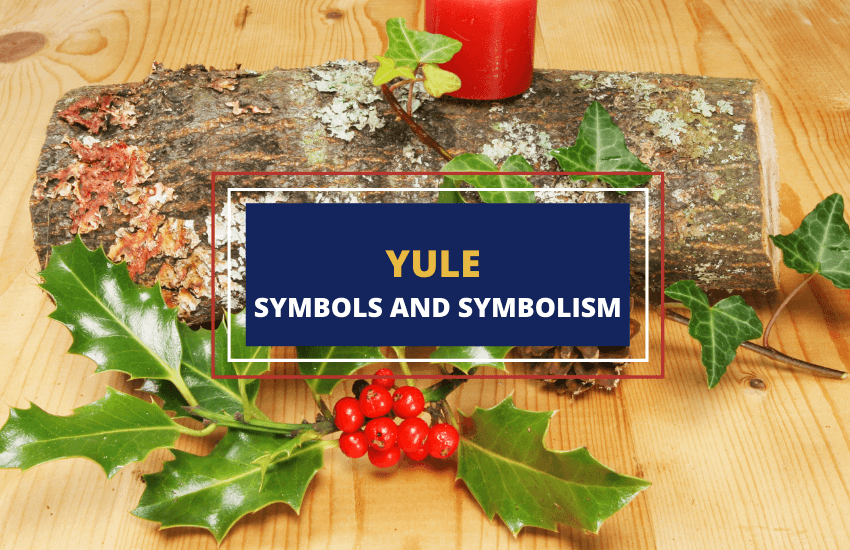
Table of Contents
The time around December 21st marks the Winter Solstice in the northern hemisphere. It’s officially the first day of winter containing the shortest day and longest night of the year. Today we barely acknowledge this event, but antiquated Celtic culture celebrated this special moment as the Yule festival. Although we may not know much about Yule, many of our modern Christmas customs were derived from it.
What is Yule?
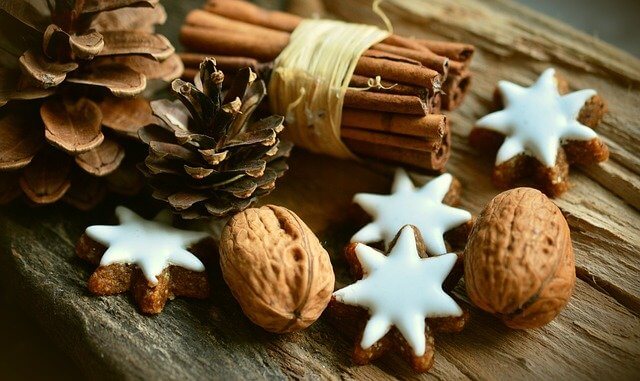
The Winter Solstice, or Yule, was an important holiday celebrating the longest night of the year and what it represented – the return of the sun towards the earth. The festival celebrated the eventual return of spring, life, and fertility.
According to 19th Century Welsh sources, this season was Alban Arthan or “light of winter”. The word “Yule” may actually have Anglo-Saxon origins relating to the word “wheel” in reference to the sun’s cycles. The prehistoric Irish called this season “Midwinter” or Meán Geimhreadh. This is a holiday people celebrated long before the ancient Celts, in what is now known as Newgrange in County Meath.
There were many superstitions that dictated how people did things during the Yule Festival. For example, in the Midlands of England it was forbidden to bring any ivy and holly into the home before Yule Eve, as it was considered bad luck to do that. In addition to this, how these plants were brought into the house was also important. The druids believed that holly was male, and ivy was female. Whichever one came inside first determined if the man or woman of the house reigned that coming year.
How Was Yule Celebrated?
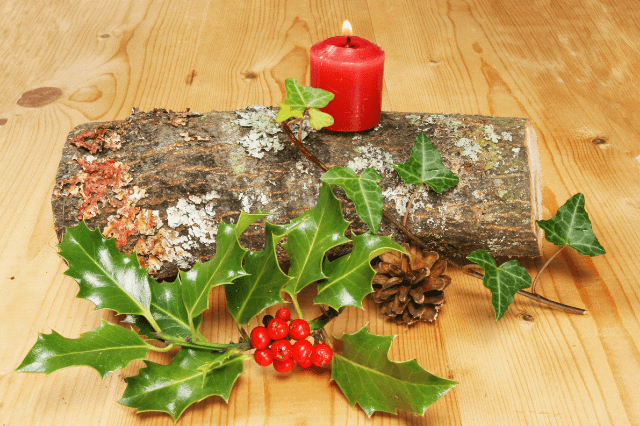
- Feasting
Farmers slaughtered cattle and hunters provided boar and stag for the feasting of this celebration. Wine, beer, and other spirits created in the previous six months was ready for consumption as well. Food shortages were common, so a festival during the Winter Solstice gave a hearty celebration full of eating and drinking.
Wheat was also an important component to the Winter Solstice. There would be plenty of breads, cookies, and cakes. This was seen as encouraging fertility, prosperity, and the continuity of sustenance.
- Evergreen Trees
Trees are a crowning feature of ancient Celtic belief during the Winter Solstice. While most trees are bleak and lifeless, there are a few that held strong. In particular, the ancient Celts perceived evergreens to be some of the most magical because they never lose their lushness. They represented protection, prosperity, and the continuity of life. They’re a symbol and reminder that although everything seems dead and gone, life still continues. The following is a list of trees and what they meant to the ancient Celts:
- Yellow Cedar – cleansing and purity
- Ash – the sun and protection
- Pine – healing, happiness, peace, and joy
- Fir – Winter Solstice; the promise of rebirth.
- Birch – renewal for the year to come
- Yew – death and resurrection
People hung gifts for the gods in the groves of evergreen trees and shrubs. Some scholars estimate this was the original practice of decorating the Christmas tree. In addition to that, it’s also where the practice of hanging wreaths on doors and in homes comes from.
Any plants or trees that survived through the winter was considered highly powerful and significant, as they provided both food, firewood, and hope that spring was around the corner.
- Yule Log
Of all the trees though, the oak tree was considered the most potent force. It’s a strong and solid wood, perceived to represent triumph and victory. As with many of their festivals, the Celts lit bonfires during Yule both for warmth and as a prayer of hope.
Bonfires were typically made of oak wood, and it was considered a good sign if the fire didn’t extinguish during the twelve-hour period on the night of the Winter Solstice. This practice is where the tradition of the Yule log comes from.
The fire would be maintained and kept burning at a slow rate for 12 days before putting it out. After that time, the ashes would be sprinkled in the field for good luck. People stored any remaining wood until the following year to help light the new Yule fire. This act symbolizes annual continuity and renewal.
Modern superstitions relate that the log must either come from your own land or be a gift and can’t be bought or stole as that brings bad luck.
- Plants and Berries
Plants like mistletoe, ivy, and holly are also thought to bring protection, luck, and stave off misfortune. All these plants and trees, when brought indoors, would assure safety to the residing woodland spirits over the harsh winter months.
Ivy stood for healing, fidelity, and marriage, and was fashioned into crowns, wreaths, and garlands. The druids valued mistletoe greatly and considered it a powerful plant. Both Pliny and Ovid mention how the druids would dance around oaks that bore mistletoe. Today, mistletoe is hung in rooms or entryways during Christmas, and if two people happen to find themselves under the spring, tradition dictates that they must kiss.
Symbols of Yule
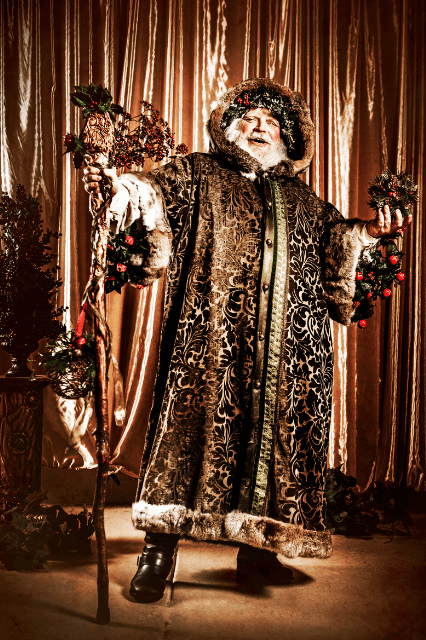
Yule was represented by many symbols, which revolve around the themes of fertility, life, renewal, and hope. Some of the most popular Yule symbols include:
- Evergreens: We’ve already discussed this above, but it’s worth mentioning again. To the ancient pagans, the evergreens were a symbol of renewal and new beginnings.
- Yule Colors: The red, green, and white colors we commonly associate with Christmas come from the celebrations of Yule time. The red berries of holly, which signified the blood of life. The white berries of mistletoe denote the purity and necessity of wintertime. Green is for the evergreen trees that last all year. Together, the three colors are a sign of the promise of things to come once the colder months come to an end.
- Holly: This plant represented the masculine element, and its leaves symbolized the Holly King. It was also seen as a protective plant as the prickliness of the leaves were believed to ward off evil.
- Yule Tree: The origins of the Christmas tree can be traced to the Yule tree. It was symbolic of the Tree of Life and was decorated with symbols of deities, as well as natural objects such as pinecones, fruit, candles, and berries.
- Wreaths: Wreaths symbolized the cyclical nature of the year and was also seen as a symbol of friendship and joy.
- Singing Carols: Participants would sing songs during Yule time and would sometimes go from door to door. In return for their singing, people would give them a small gift as a symbol of blessings for the new year.
- Bells: During the Winter Solstice, people would ring bells to scare away evil spirits that were lurking about to do harm. This is also symbolic of ringing away the darkness of winter and welcoming in the sunshine of spring.
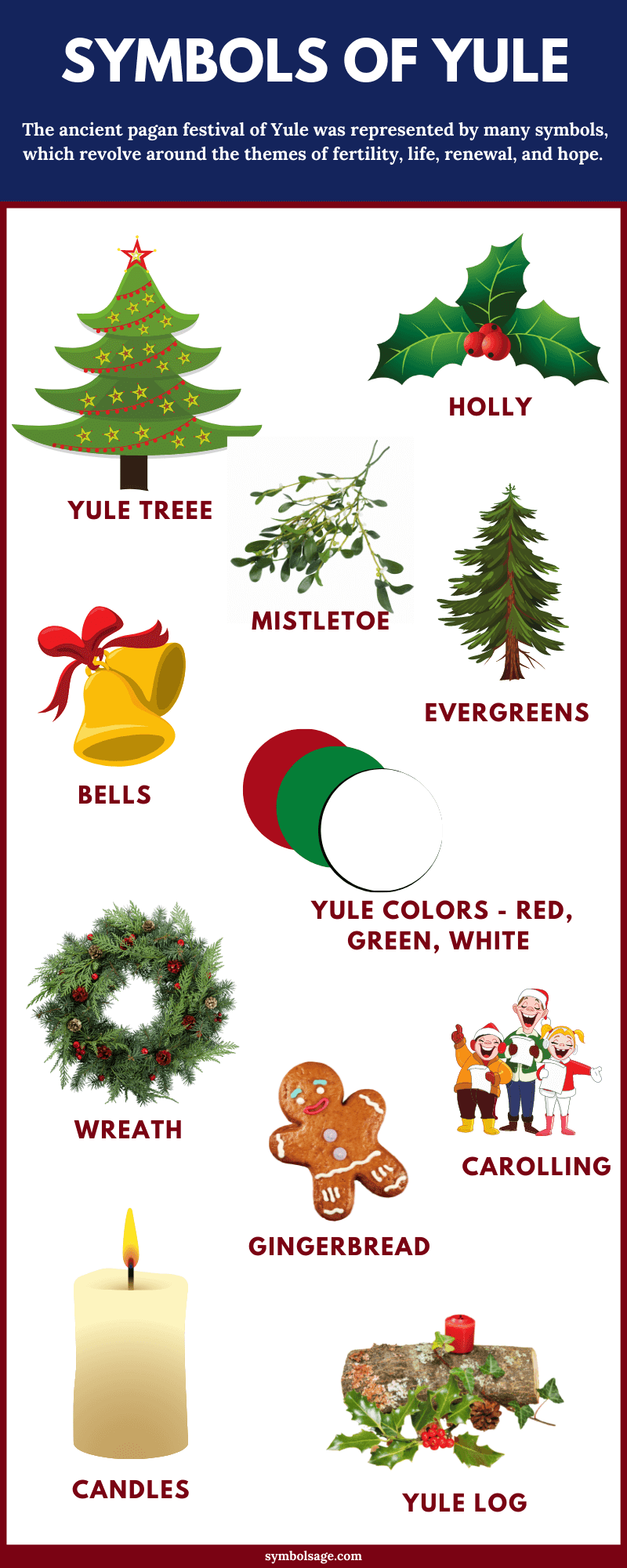
Holly King vs. the Oak King
The Holly King and the Oak King traditionally personified winter and summer. These two characters are said to be fighting each other, representative of the cycle of the seasons and of dark and light. However, while it’s true the prehistoric Celts revered both Holly and Oak trees, there is no evidence or proof that this was a time of battle between them.
In fact, written records point to the contrary. The Celts viewed Holly and Oak to be twin spirit brothers of the forest. This is partly because they are resistant to lightning strikes and provide green growing things during the winter months even though they are not evergreens.
It’s like that the stories of the fighting kings are a newer addition to the celebrations of Yule
How is Yule Celebrated Today?
With the advent of Christianity, Yule underwent a major transformation and became known as the Christian festival Christmastide. Many pagan Yule rituals and traditions were adopted into the Christian version of the festival and continue to this day.
Yule as a pagan festival is also still celebrated today by Wiccans and Neopagans. Because there are many forms of Neopaganism today, Yule celebrations can vary.
In Brief
Winter is the time to draw in. It can be a lonely, harsh period due to the lack of light and massive amounts of snow with freezing temperatures. A bright, light-filled feast with friends, family and loved ones was a perfect reminder in the dark depths of winter that light and life are always present. While Yule has undergone many changes, it continues to be a festival that’s celebrated by different groups of people.








